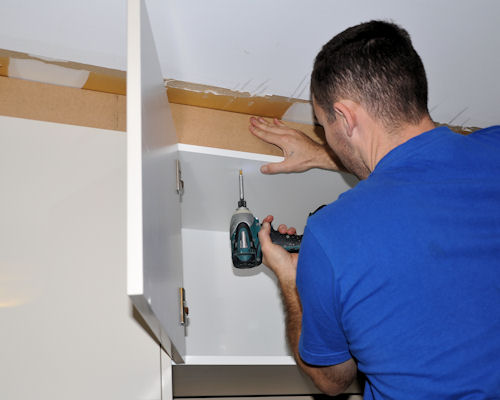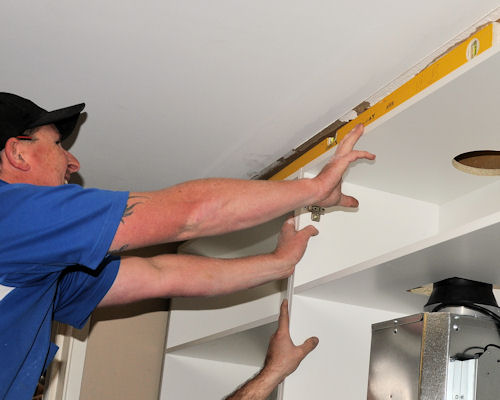Installing wall cabinets
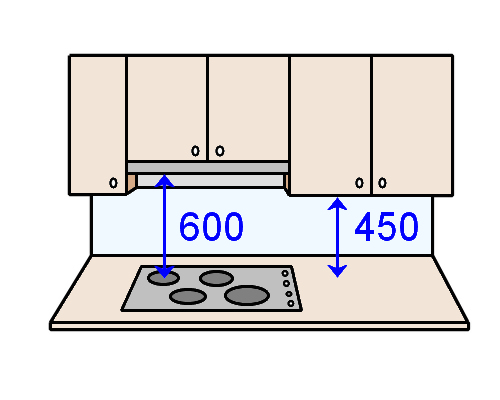 Audio for slide 2 (mp3 |6|KB)
Audio for slide 2 (mp3 |6|KB)
The Australian Standard for domestic kitchen installations (AS 4386) sets various minimum requirements for wall cabinet heights.
For example, the Standard states that the clearance between the top of the bench top and the underside of a wall cabinet must be at least 450 mm.
In the case of a cooktop, the minimum clearance between the top of the highest burner and the underside of a range hood or exhaust fan is 600 mm.

For example, the Standard states that the clearance between the top of the bench top and the underside of a wall cabinet must be at least 450 mm.
In the case of a cooktop, the minimum clearance between the top of the highest burner and the underside of a range hood or exhaust fan is 600 mm.

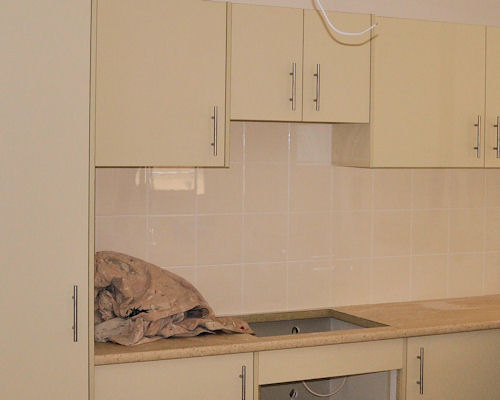 Audio for slide 3 (mp3 |6|KB)
Audio for slide 3 (mp3 |6|KB)
Apart from these clearance requirements, the height of the wall cabinets will also be influenced by the design and materials chosen for the splashback.
For example, if the splashback behind the stove is going to be 4 rows of 150 mm tiles (as shown in the photo above) and you want to avoid cutting the tiles, the height would need to be 600 plus a grout width of 2 mm on either side of each tile - making it a total of 610 mm.

For example, if the splashback behind the stove is going to be 4 rows of 150 mm tiles (as shown in the photo above) and you want to avoid cutting the tiles, the height would need to be 600 plus a grout width of 2 mm on either side of each tile - making it a total of 610 mm.

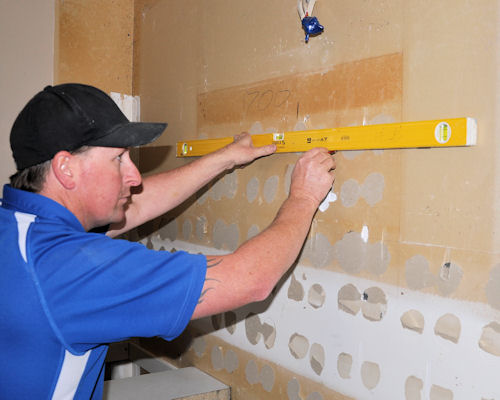 Audio for slide 4 (mp3 |6|KB)
Audio for slide 4 (mp3 |6|KB)
The process for installing the wall cabinets is as follows.
- Draw a horizontal line along the wall to mark where the underside of the cabinets will go.
Note that the plan is likely to specify the height measured from the top of the bench top, so if it hasn't been installed yet you will need to mark that finishing line first.
If the wall is timber or steel framed, mark the stud positions on the wall.
This may simply involve extending the marks used for the floor cabinets.

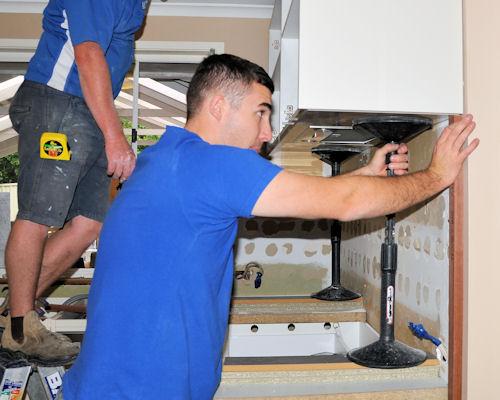 Audio for slide 5 (mp3 |6|KB)
Audio for slide 5 (mp3 |6|KB)
- Put adjustable cabinet supports, or some other form of support, in place to take the weight of the wall cabinets.
Then lift the cabinets into position one by one.
This photo shows an installer using a cut-to-length stick to set the exact height of the wall cabinet above the carcase of the floor cabinet under it.
Note that in this case the bench top hasn't yet been installed, so the length of the stick will be the height of the splashback plus the thickness of the bench top.

Learning activity
 Audio for slide 7 (mp3 |6|KB)
Audio for slide 7 (mp3 |6|KB)
You need to take just as much care making the wall cabinets level and plumb as for the floor cabinets. See if you can list some of the problems you might be faced with if the wall cabinets weren't installed level and plumb. Be as specific as you can. Share your answers with your trainer and other members of your group.

Industry Network Training and Assessment Resourses
© 2016 Workspace Training


